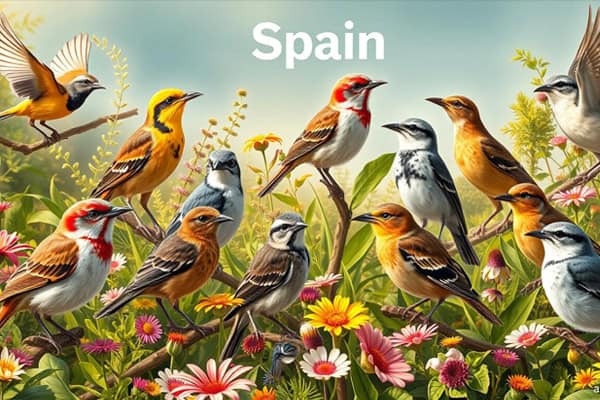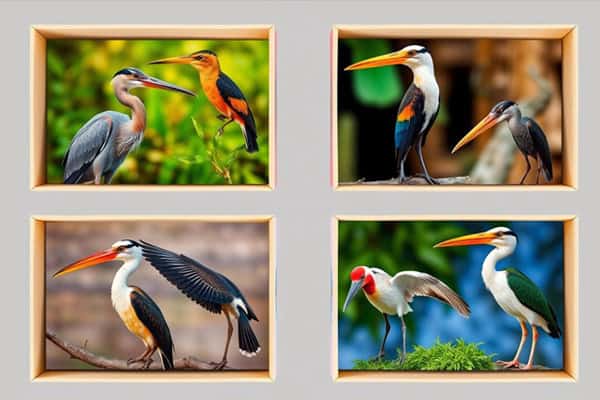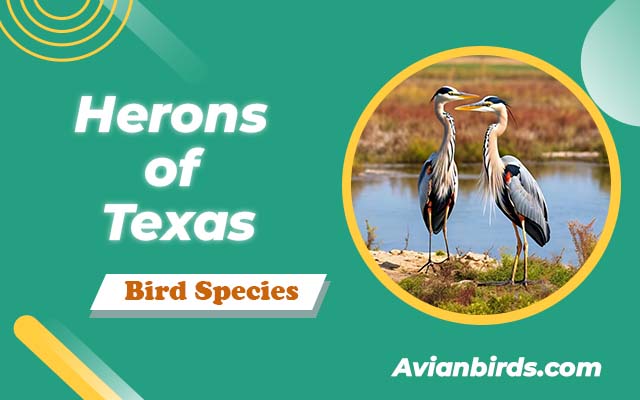11 Types of Owls in Minnesota (With Pictures)
Did you know Minnesota has 12 different types of owls? Owls are key predators and are fascinating to watch. We’ll look at each type, from the small Eastern screech owl to the big Great Gray Owl. We’ll see what makes them special.
This guide offers interesting facts and beautiful pictures. It helps us understand the owls of Minnesota. Whether you love birds or just find them interesting, we’ll learn about their lives and homes. We’ll see how these amazing birds do well in Minnesota’s varied places.
Introduction to the Owls of Minnesota
Owls are special to us, known for their haunting calls and secret lives at night. In Minnesota, we find many owl species living in different places. They have unique ways to survive and play a big role in our ecosystem.
The Great Horned Owl and the Snowy Owl are just a few examples. Each has its own way of living and looking.
Minnesota’s different places, like forests and wetlands, are perfect for owls. Each owl has its own way to hunt, nest, and eat. For instance, the Eastern Screech Owl and Northern Saw-whet Owl have special ways of finding food and a safe place to live.
But owls face big challenges. Their homes are being destroyed and they are facing other dangers. By learning about these problems, we can help protect them. We can all work together to save Minnesota’s owls.
1. Eastern Screech-Owl
The Eastern screech owl, known as Megascops asio, is a key part of Minnesota’s bird world. It’s known for its unique looks and how well it adapts to different places. These owls live for about 8 to 10 years, facing many environments in their lives.
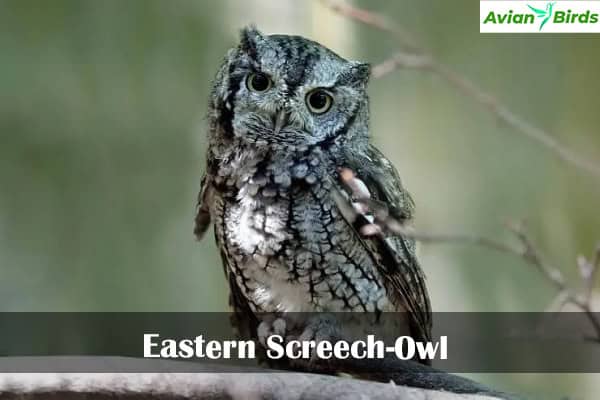
Scientific Information and Lifespan
Adult Eastern Screech-Owls are 6.5 to 10 inches long. They have a wingspan of 18 to 24 inches. They weigh between 4.25 to 8.5 ounces.
In Minnesota, about 39% of these owls are red. There are many subspecies, like M. A. Maxwelliae and M. A. Hasbrouck. They show off different looks.
Habitat and Adaptability
This owl species can live in many places. They like dense forests, cities, and suburbs. Their ability to adapt helps them stay in many areas.
The Eastern Screech-Owl is great at fitting into different places. It can live in both natural and changed landscapes.
Diet and Hunting Techniques
Eastern Screech-Owls eat a variety of things. They mainly hunt small mammals like voles and mice. They also eat insects and fruits sometimes.
These owls hunt at night using their sharp hearing. Their hunting ways show how well they adapt to find food.
2. Great Horned Owl
The Great Horned Owl, known as Bubo virginianus, is common in Minnesota. It has big features and special markings. Knowing about its looks, nesting, and eating habits helps us see its importance in nature.

Identification and Physical Characteristics
The Great Horned Owl is big and has tufted ears. Its feathers are grey to reddish-brown. It can be 17 to 25 inches long and has a 5-foot wingspan.
It weighs 2.64 to 3.52 pounds. Its camouflage lets it hide well in forests, making it great at hunting or resting.
Nesting Habits and Breeding
The Great Horned Owl starts nesting early, sometimes in January. Males show off in the air to find mates. They use old nests of hawks and eagles for safety.
A nest has 1 to 3 eggs. The eggs hatch in 30 to 37 days.
Diet and Hunting Behavior
The Great Horned Owl eats small mammals like rabbits and rodents. It also hunts bigger birds, reptiles, and sometimes pets. It hunts at night using its sharp hearing and sight.
With strong talons, it catches its prey quickly. This shows it’s a skilled night hunter.
3. American Barn Owl
The American Barn Owl, known as Tyto furcata, has a heart-shaped face and pale brown upper body. It lives in many places in the United States. But it’s not often seen in Minnesota. This owl is great at hunting in the dark because of its sharp hearing and silent flight.
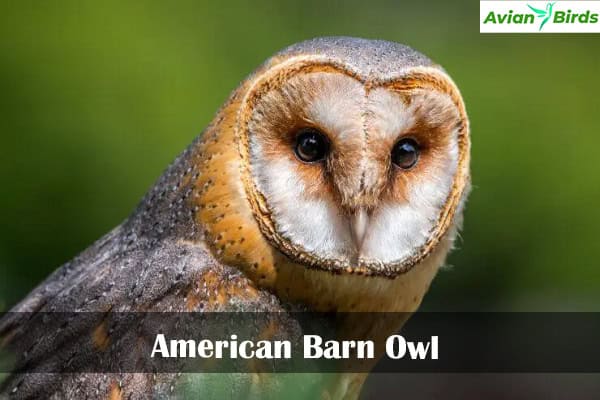
Distinctive Features
The American Barn Owl has unique features. Its heart-shaped face and pale colour help it hear better. Its ears are placed differently, helping it find prey in the dark.
Nesting Sites and Behavior
Barn Owls like safe places to nest, like tree cavities or barns. They are monogamous and show off during courtship. Both parents care for their young, showing their dedication.
Prey and Hunting Strategies
Barn Owls mainly eat small mammals like voles and mice. They hunt by sound, which is key in the dark. Their silent flight makes them good ambush predators.
4. Barred Owl
The Barred Owl, known as Strix varia, has brownish-grey feathers with dark stripes. They live about eight years and are 15 to 25 inches tall. They like dense forests, wooded swamps, and areas near water in Minnesota.
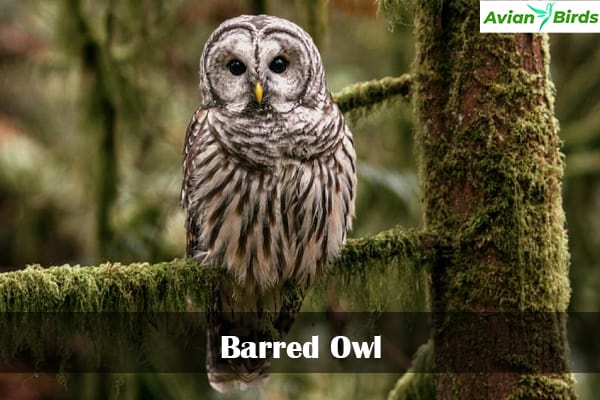
Identification and Characteristics
Male and female Barred Owls look alike, making them hard to tell apart. They make a unique call, saying, “Who cooks for you? Who cooks for you all?” This is different from the usual “hoo-hoo” sounds of other owls.
Territorial Behavior
Barred Owls have small territories, less than six miles, and don’t migrate. They start courting in February, forming lifelong pairs. They often come back to the same nesting sites every year.
Diet and Feeding Habits
These hunters eat small mammals like mice and voles. They also eat birds, reptiles, and other animals. Their varied diet helps them survive in different places in Minnesota. Birdwatchers can see them at places like the Minnesota Valley National Wildlife Refuge.
Also, read: Owls In Arizona
5. Boreal Owl
The Boreal Owl is a stunning sight in Minnesota’s northern forests. It has bright yellow eyes and a strong body. They live in different places, mainly in boreal forests, showing their special ways and importance in nature.
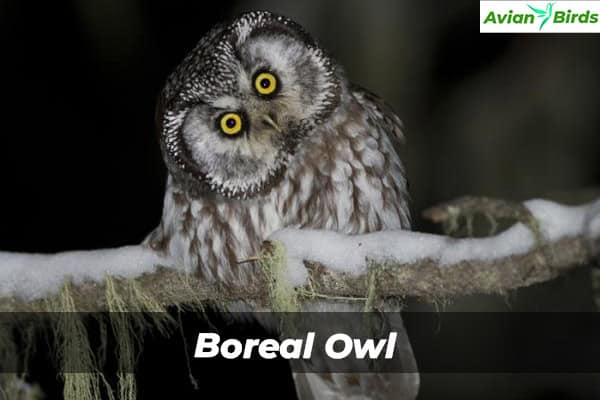
Identification and Geographic Range
The Boreal Owl is about 10 to 13 inches long. It’s bigger than a Northern Saw-whet Owl but smaller than a Barred Owl. They like forests with tall trees, especially in Lake, Cook, and St. Louis counties.
The first Boreal Owl nest in Minnesota was found in 1978. This was a big deal for this owl in the U.S. Surveys have shown that males sing during breeding season. This shows they like certain places to live.
Breeding Habits and Nesting
Boreal Owls make nests in tree holes, often made by woodpeckers. Males sing from high spots in trees to find mates. Sadly, there are fewer nests and songs now than before.
Since 2013, the Boreal Owl is considered special in Minnesota. It’s key to watch and protect where they breed. Knowing how they breed helps keep their numbers steady.
| Measurement | Value |
|---|---|
| Length | 10-13 inches |
| Wingspan | 22 inches |
| Habitat Types | Boreal forests, mixed coniferous and deciduous forests |
| Common Nesting Sites | Tree cavities created by woodpeckers |
| Year of First Nest Documented in Minnesota | 1978 |
| Counties with Documented Nests | Lake, Cook, St. Louis, Roseau |
| Conservation Status in Minnesota | Species of Special Concern since 2013 |
6. Burrowing Owl
The Burrowing Owl is a fascinating species. It stands out with its unique characteristics and behaviors. This small owl, usually 7 to 10 inches tall, lives in abandoned burrows of mammals like badgers.
Knowing their habitat and diet is key. It helps us understand their challenges and the need for conservation.

Unique Characteristics and Habitat
Burrowing Owls live in grasslands. They are smaller than most owls. They use burrows for nesting, left by larger mammals.
In places like Minnesota, their numbers have dropped a lot. This is due to habitat loss. Threats include farming, urban growth, and losing prey like prairie dogs.
Behavior and Diet
These owls have interesting behaviours. They cache food in their burrows. This shows their ability to manage resources.
Their diet includes insects and small rodents. They hunt during the day and night. This helps them survive. Watching their numbers is important for conservation.
| Aspect | Details |
|---|---|
| Height | 7 to 10 inches |
| Typical Habitat | Grasslands and areas with burrowing mammals |
| Diet | Insects, small rodents |
| Activity Period | Day and night |
| Endangered Status in Minnesota | Listed as endangered; significant population decline |
| Threats | Habitat loss, climate change, agricultural practices |
| Conservation Efforts | Reintroduction programs, habitat protection, monitoring |
Must Read: Owls in Arkansas
7. Great Gray Owl
The Great Gray Owl is amazing because of its size and hunting skills. It’s the biggest owl in North America. It can grow from 24 to 33 inches tall. Its grey feathers and big eyes make it stand out in the forest.

Size and Physical Attributes
This owl has a huge wingspan, up to 60 inches. On average, females have 56 inches and males have 55 inches. It’s much lighter than the Great Horned Owl, weighing about 125% less.
Its size lets it move through forests of spruce, tamarack, and pine. These forests are found in Canada and Northern Minnesota.
Hunting Techniques and Skills
The Great Gray Owl’s hunting skills are incredible. It hunts in the early morning and late afternoon. It’s also active during the day and at night.
Its great hearing lets it find prey under thick snow. It mainly eats voles, which comprise over 90% of its diet. It also eats rats, mice, shrews, and squirrels, showing it can adapt to different places.
Conservation Status
The Great Gray Owl’s future is uncertain due to habitat loss and changes in prey. We need to protect it and its home. By raising awareness and watching its numbers, we can help save this amazing owl.
8. Long-eared Owl
The Long-eared Owl of Minnesota catches our eye with its cat-like look and tufted ears. We learn about its cultural importance and where it likes to live.
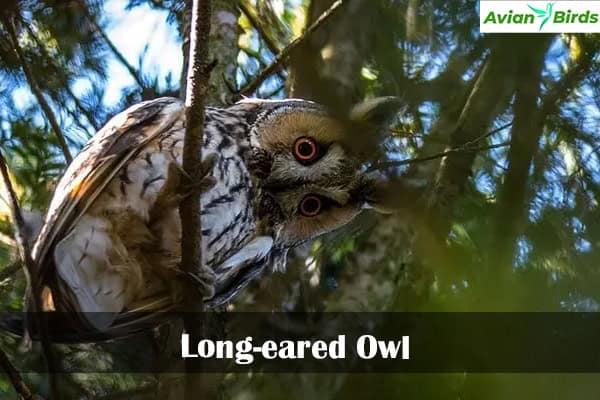
Cultural Significance and Characteristics
For a long time, the Long-eared Owl has been special in many cultures. It’s seen as mysterious and wise. Folklore stories often include this owl, linking it to knowledge and intuition.
Its big eyes and ear tufts make it even more fascinating. The owl’s presence at night has inspired many myths and legends.
Habitat Preferences
The Long-eared Owl likes places with many trees or shrubs and open areas for hunting. This habitat gives it cover and chances to find food. We must protect these places because they’re important for the owl’s survival.
Knowing where the owl lives helps us help it. This way, we can work to keep it safe.
Also, visit: Owls in Massachusetts
9. Northern Hawk Owl
The Northern Hawk Owls are special in Minnesota. It has big eyes and a unique look. It’s bigger than some owls but smaller than others.
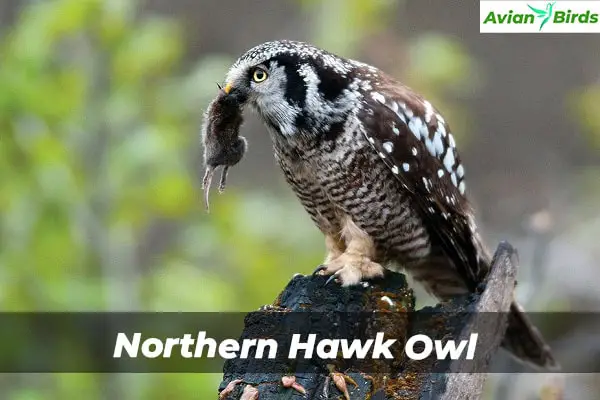
It has brown fur with white spots and a white face with a black border. Its yellow eyes help it see well.
Physical Appearance and Behavior
The Northern Hawk Owl looks amazing. It has long facial features and a long tail. This helps it move fast.
It hunts during the day, which is rare. It sits on trees, watching for prey. Then, it quickly dives down to catch it.
Hunting Strategy
The Northern Hawk Owl is very good at hunting. It looks for small animals and birds from high up. It likes to be in open forests near marshes.
Even though it hunts during the day, it also goes out at night. It changes its hunting time based on what it can find.
| Characteristic | Description |
|---|---|
| Height | 12 to 15 inches |
| Colour Patterns | Brown upperparts with white spots; white face with black border |
| Eye Color | Yellow |
| Primary Hunting Time | Daytime, also at night |
| Habitat | Open coniferous or mixed forests near marshy areas |
10. Northern Saw-whet Owl
The Northern Saw-whet Owls of Minnesota, known as Aegolius acadicus, is a fascinating bird. It’s small, measuring 6.5 to 9 inches long. These owls live in northern North America’s forests.
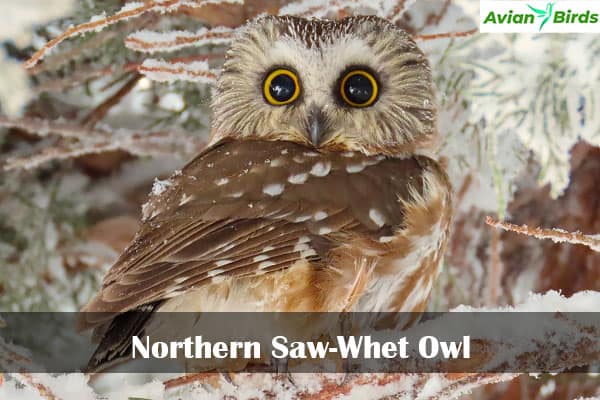
Though we rarely see them, their calls are loud at night. These sounds let us know they’re there.
Identifying Features
The Northern Saw-whet Owl’s call is a high-pitched “too-too-too”. It’s heard in evergreen forests from January to May. They weigh about 3 to 4 ounces, similar to a robin.
Males are smaller than females, showing a difference in size. Female owls are more common in our encounters.
Habitat and Range
These owls live in mature coniferous forests. They like to nest in old woodpecker holes. In the breeding season, they’re mostly in Southern Canada and northern U.S. states.
As winter comes, they move south. They go to coastal areas, the Great Plains, and the Southwest. Thanks to Project Owlnet, we learn about their migrations.
Must visit: Owls in Africa
11. Short-eared Owl
The Short-eared Owl, known as Asio flammeus, is a bird with a unique look and interesting acting methods. It is 13 to 17 inches long. It has short ear tufts and mottled brown feathers that help it hide in its surroundings.

This owl lives in open places like grasslands and marshes. It hunts during the day, using its special traits to find food.
Physical Characteristics
The Short-eared Owl has big wings and a small body. Its long, narrow wings let it fly well while hunting. These features help it avoid predators and catch prey.
It hunts during the day, unlike most owls. It looks for voles and small rodents. Its hunting skills are key to its survival.
Behaviour and Nesting
The Short-eared Owl nests on the ground in open areas. This makes its eggs vulnerable to predators like foxes and raccoons. During the breeding season, males show off by flying in the air to attract females.
This behaviour is crucial for their breeding. It helps ensure their species continues.
Best Owl-Watching Locations in Minnesota With map
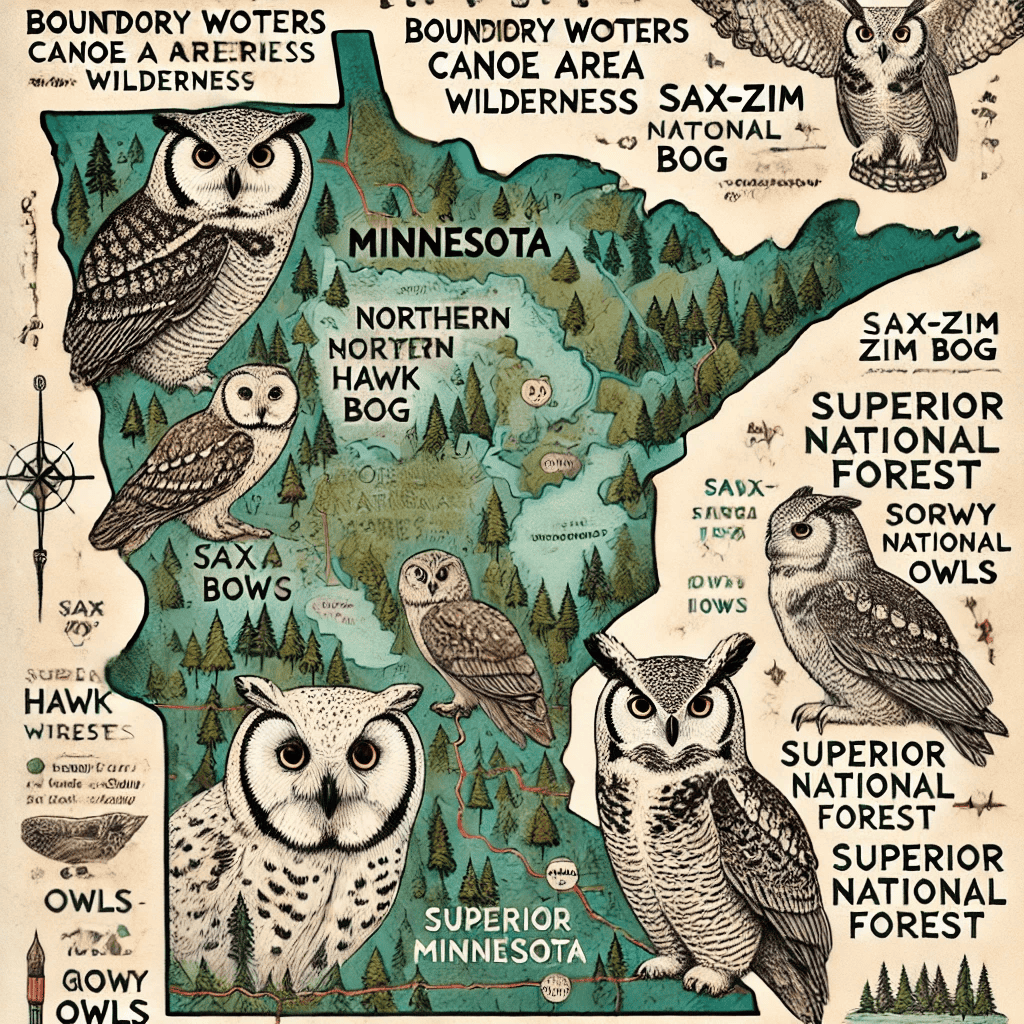
Where to Spot Owls in Minnesota
If you’re looking to spot owls in Minnesota, there are several excellent locations depending on the species you’re after:
- Sax-Zim Bog (St. Louis County) – A prime spot for winter birdwatchers, known for seeing Great Gray Owls and Snowy Owls. Snowy Owls migrate here from November to February
- Superior National Forest – Great for spotting Northern Hawk Owls and Great Gray Owls, especially in the winter
- Agassiz National Wildlife Refuge (Northwest MN) – Another good location for Snowy Owl sightings during winter
- Carlos Avery Wildlife Management Area and Minnesota Valley National Wildlife Refuge – Known for Snowy Owls in the winter
- For year-round owl sightings, look out for species like the Great Horned Owl and Barred Owl, which can be found in forests across the state
Each of these areas provides great opportunities to view a variety of owl species throughout the year, particularly during the colder months when many species are more active.
Read More🐦Related Articles:
| Common Shelduck: Colorful Coastal Duck Species |
| Hummingbirds in Texas |
| How to Keep Squirrels Out of Bird Feeders |
| Woodpeckers Found in Oregon |
| Woodpeckers in Indiana |
Conclusion
Owls in Minnesota are truly amazing. They come in many shapes and sizes. Each one is special and important to our world.
Learning about their habits and homes helps us see their value. It shows why we must protect them. This is key to keeping our nature rich and diverse.
Studies show how owls move and live in different places. Great Horned Owls and Boreal Owls have unique ways to survive. Their stories teach us to care for these birds.
We must look after these birds. They are part of our natural world. By doing so, we help keep our skies beautiful for the future.


